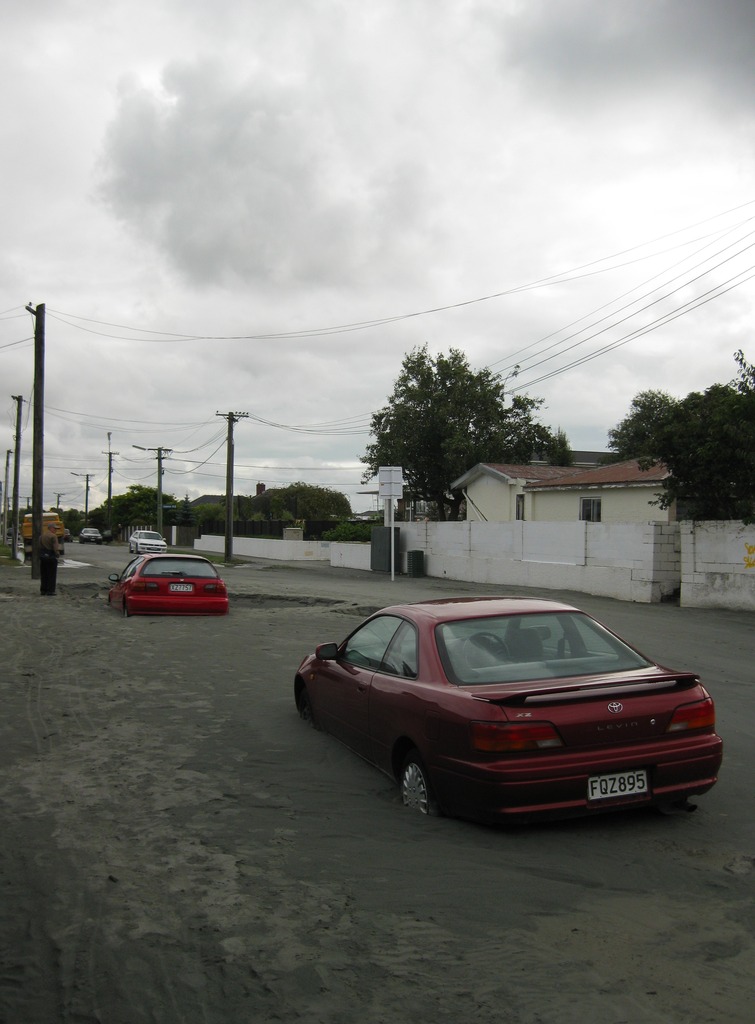|
Buddhism In New Zealand
Buddhism is New Zealand's third-largest Religion in New Zealand, religion after Christianity in New Zealand, Christianity and Hinduism in New Zealand, Hinduism standing at 1.5% of the population of New Zealand. Buddhism originates in Asia and was introduced to New Zealand by immigrants from East Asia. History The first Buddhists in New Zealand were Chinese diggers in the Otago goldfields in the 1860s. Their numbers were small, and the 1926 census, the first to include Buddhism, recorded only 169. In the 1970s travel to Asian countries and visits by Buddhist teachers sparked an interest in the religious traditions of Asia, and significant numbers of New Zealanders adopted Buddhist practices and teachings. Since the 1980s Asian migrants and refugees have established their varied forms of Buddhism in New Zealand. In the 2010s more than 50 groups, mostly in the Auckland region, offered different Buddhist traditions at temples, centres, monasteries and retreat centres. Many migrant c ... [...More Info...] [...Related Items...] OR: [Wikipedia] [Google] [Baidu] |
Christchurch
Christchurch ( ; mi, Ōtautahi) is the largest city in the South Island of New Zealand and the seat of the Canterbury Region. Christchurch lies on the South Island's east coast, just north of Banks Peninsula on Pegasus Bay. The Avon River / Ōtākaro flows through the centre of the city, with an urban park along its banks. The city's territorial authority population is people, and includes a number of smaller urban areas as well as rural areas. The population of the urban area is people. Christchurch is the second-largest city by urban area population in New Zealand, after Auckland. It is the major urban area of an emerging sub-region known informally as Greater Christchurch. Notable smaller urban areas within this sub-region include Rangiora and Kaiapoi in Waimakariri District, north of the Waimakariri River, and Rolleston and Lincoln in Selwyn District to the south. The first inhabitants migrated to the area sometime between 1000 and 1250 AD. They hunted moa, which led ... [...More Info...] [...Related Items...] OR: [Wikipedia] [Google] [Baidu] |
Buddhism By Country
This list of Buddhism by country shows the distribution of the Buddhist religion, practiced by about 535 million people as of the 2010s, representing 7% to 8% of the world's total population. Buddhism is the dominant religion in Buddhism in Bhutan, Bhutan, Buddhism in Myanmar, Myanmar, Buddhism in Cambodia, Cambodia, Chinese Buddhism, Mainland China, Hong Kong, Buddhism in Japan, Japan, Tibetan Buddhism, Tibet, Buddhism in Laos, Laos, Macau, Buddhism in Mongolia, Mongolia, Buddhism in Singapore, Singapore, Buddhism in Sri Lanka, Sri Lanka, Buddhism in Taiwan, Taiwan, Buddhism in Thailand, Thailand, Kalmykia and Buddhism in Vietnam, Vietnam. Large Buddhist populations live in Buddhism in Korea, North Korea, Buddhism in Nepal, Nepal, India and Buddhism in Korea, South Korea. China is the country with the largest population of Buddhists, approximately 244 million or 18.2% of its total population. They are mostly followers of Chinese Buddhism, Chinese schools of ''Mahayana'', making ... [...More Info...] [...Related Items...] OR: [Wikipedia] [Google] [Baidu] |
Buddhism In New Zealand
Buddhism is New Zealand's third-largest Religion in New Zealand, religion after Christianity in New Zealand, Christianity and Hinduism in New Zealand, Hinduism standing at 1.5% of the population of New Zealand. Buddhism originates in Asia and was introduced to New Zealand by immigrants from East Asia. History The first Buddhists in New Zealand were Chinese diggers in the Otago goldfields in the 1860s. Their numbers were small, and the 1926 census, the first to include Buddhism, recorded only 169. In the 1970s travel to Asian countries and visits by Buddhist teachers sparked an interest in the religious traditions of Asia, and significant numbers of New Zealanders adopted Buddhist practices and teachings. Since the 1980s Asian migrants and refugees have established their varied forms of Buddhism in New Zealand. In the 2010s more than 50 groups, mostly in the Auckland region, offered different Buddhist traditions at temples, centres, monasteries and retreat centres. Many migrant c ... [...More Info...] [...Related Items...] OR: [Wikipedia] [Google] [Baidu] |
Index Of Buddhism-related Articles
0–9 * 22 Vows of Ambedkar A * Abhayagiri Buddhist Monastery * Abhayamudra * Abhibhavayatana * Abhidhajamahāraṭṭhaguru * Abhidhamma * Abhidhamma Pitaka * Abhijatabhivamsa * Abhijna * Acala * Acariya * Access to Insight * Achar (Buddhism) * Adam's Peak * Adhiṭṭhāna * Adi-Buddha * ''Ādittapariyāya Sutta'' * Adosa * Āgama * Agga Maha Pandita * '' Aggañña Sutta'' * Aggavamsa * ''Aggi-Vacchagotta Sutta'' * Ahimsa * Anne Hopkins Aitken * Robert Baker Aitken * Ajahn * Ajahn Amaro * Ajahn Brahm * Ajahn Candasiri * Ajahn Chah * Ajahn Fuang Jotiko * Ajahn Jayasāro * Ajahn Khemadhammo * Ajahn Lee * Ajahn Maha Bua * Ajahn Mun * Ajahn Pasanno * Ajahn Sao Kantasilo Mahathera * Ajahn Sobin S. Namto * Ajahn Sucitto * Ajahn Sujato * Ajahn Sumedho * Ajahn Sundara * Ajahn Suwat Suvaco * Ajahn Thate * Ajahn Waen Sujinno * Ajahn Viradhammo * Ajanta Caves * Ajari * Ajatasattu * Akasagarbha * Aksobhya * Alayavijnana * Alexandra David-Néel * Alobha * Alodawpyi Pagoda * ... [...More Info...] [...Related Items...] OR: [Wikipedia] [Google] [Baidu] |
Buddhism In Southeast Asia
Buddhism in Southeast Asia includes a variety of traditions of Buddhism including two main traditions: Mahāyāna Buddhism and Theravāda Buddhism. Historically, Mahāyāna Buddhism had a prominent position in this region, but in modern times most countries follow the Theravāda tradition. Southeast Asian countries with a Theravāda Buddhist majority are Thailand, Cambodia, Laos and Myanmar, all mainland countries. Vietnam continues to have a Mahāyāna majority due to Chinese influence. Indonesia was Mahāyāna Buddhist since the time of the Sailendra and Srivijaya empires, but Mahāyāna Buddhism in Indonesia is now largely practiced by the Chinese diaspora, as in Singapore and Malaysia. Mahāyāna Buddhism is the predominant religion of Chinese communities in Singapore, Malaysia, Brunei, and Indonesia. History Early traditions and origins Buddhism reached Southeast Asia both directly over sea from India and indirectly from Central Asia and China in a process that spann ... [...More Info...] [...Related Items...] OR: [Wikipedia] [Google] [Baidu] |
Buddhism In Oceania
Buddhism is a minority religion in Oceania. Buddhist population by countries or territories Buddhism in Australia In Australia, Buddhism is a small but growing religion. According to the 2016 census, 2.4 percent of the total population of Australia , identified as Buddhist. It was also the fastest-growing religion by percentage, having increased its number of adherents by 79 percent between the 1996 and 2001 censuses. Buddhism is the third largest religion in the country after Christianity and Islam. Buddhism in New Zealand Buddhism is New Zealand's third largest religion after Christianity and Hinduism, standing at 1.5% of the population of New Zealand. Buddhism originates in Asia and was introduced to New Zealand by immigrants from East Asia. Buddhism in Northern Mariana Island According to the Pew Research Center, 2010, Buddhists constitute 10.6% of the population of Northern Mariana Island.The Japanese occupation had the effect of creating a sizable Buddhist community whic ... [...More Info...] [...Related Items...] OR: [Wikipedia] [Google] [Baidu] |
Buddhism In Australia
In Australia, Buddhism is a minority religion. According to the 2016 census, 2.4 percent of the total population of Australia identified as Buddhist. It was also the fastest-growing religion by percentage, having increased its number of adherents by 79 percent between the 1996 and 2001 censuses. The highest percentage of Buddhists in Australia is present in Christmas Island, where Buddhists constitute 18.1% of the total population according to the 2016 Census.http://regional.gov.au/territories/Christmas/files/CI_2016_Census_Data_Fact_Sheet_Final.pdf Buddhism is the fourth largest religion in the country after Christianity , Islam and Hinduism. Demographics The change in demography of Buddhism in Australia is given: 2011 census data showed the Buddhist affiliated population had grown from 418,749 to 528,977 people, an increase of 20.8%. As Australia's population was estimated at 21.5 million at the time, according to the same census, the Buddhist population may be estima ... [...More Info...] [...Related Items...] OR: [Wikipedia] [Google] [Baidu] |
Fo Guang Shan
Fo Guang Shan (FGS) () is an international Chinese Mahāyāna Buddhist organization and monastic order based in Taiwan that practices Humanistic Buddhism. The headquarters, Fo Guang Shan Monastery is located in Dashu District, Kaohsiung, and is the largest Buddhist monastery in Taiwan. The organization is also one of the largest charity organizations in Taiwan. The organization's counterpart for laypeople is known as the Buddha's Light International Association. Founded in 1967 by Hsing Yun, the order promotes Humanistic Buddhism and is known for its efforts in the modernization of Chinese Buddhism. The order is famous for its use of technology and its temples are often furnished with the latest equipment. Hsing Yun's stated position for Fo Guang Shan is that it is an "amalgam of all Eight Schools of Chinese Buddhism" (). The Fo Guang Shan order has an associated college, Fo Guang University, which offers undergraduate and postgraduate degrees in both Buddhist Studies and secula ... [...More Info...] [...Related Items...] OR: [Wikipedia] [Google] [Baidu] |
Thai Forest Tradition
The Kammaṭṭhāna Forest Tradition of Thailand (from pi, kammaṭṭhāna meaning Kammaṭṭhāna, "place of work"), commonly known in the West as the Thai Forest Tradition, is a Parampara, lineage of Theravada Buddhist monasticism. The Thai Forest Tradition started around 1900 with Ajahn Mun Bhuridatto, who wanted to practice Buddhist monasticism, and its meditative practices, according to the normative standards of pre-sectarian Buddhism. After studying with Ajahn Sao Kantasīlo and wandering through the north-east of Thailand, Ajahn Mun reportedly became a Anāgāmi, non-returner and started to teach in North-East Thailand. He strived for a revival of the Pre-sectarian Buddhism, Early Buddhism, insisting on a strict observance of the Buddhist monastic code, known as the Vinaya, and teaching the practice of ''jhāna'' and the realisation of ''nibbāna''. Initially, Ajahn Mun's teachings were met with fierce opposition, but in the 1930s his group was acknowledged as a f ... [...More Info...] [...Related Items...] OR: [Wikipedia] [Google] [Baidu] |
Forest Tradition Of Ajahn Chah
The Forest Tradition of Ajahn Chah is a Mahanikai monastic organization in the Thai Forest Tradition composed of the students of Ajahn Chah Subhaddo. Strictly speaking, the ''Forest Tradition of Ajahn Chah'' denotes the institutions who have a branch affiliation with Wat Pah Pong, the administrative center of the organization. History Ajahn Chah's early training Ajahn Jayasāro relates that while many Mahanikai monks would reordain in the Dhammayut order as an act of devotion to Ajahn Mun, a handful of other followers of Ajahn Mun would choose to stay Mahanikai monks. Luang Por Thongrat Ajahn Jayasaro relates that Ajahn Thongrat was considered "Zen Like", in the sense that he was very "Vigorous and outspoken — and outrageous — in his behaviour. Which of course in Thai monastic idiom, where etiquette and good behavior is so stressed, it quite made him stand out." Little is known of Ajahn Chah's relationship with Ajahn Thongrat, though Ajahn Chah relates a story about ... [...More Info...] [...Related Items...] OR: [Wikipedia] [Google] [Baidu] |
2011 Christchurch Earthquake
A major earthquake occurred in Christchurch on Tuesday 22 February 2011 at 12:51 p.m. local time (23:51 UTC, 21 February). The () earthquake struck the entire of the Canterbury region in the South Island, centred south-east of the central business district. It caused widespread damage across Christchurch, killing 185 people, in New Zealand's fifth-deadliest disaster. Christchurch's central city and eastern suburbs were badly affected, with damage to buildings and infrastructure already weakened by the magnitude 7.1 Canterbury earthquake of 4 September 2010 and its aftershocks. Significant liquefaction affected the eastern suburbs, producing around 400,000 tonnes of silt. The earthquake was felt across the South Island and parts of the lower and central North Island. While the initial quake only lasted for approximately 10 seconds, the damage was severe because of the location and shallowness of the earthquake's focus in relation to Christchurch as well as ... [...More Info...] [...Related Items...] OR: [Wikipedia] [Google] [Baidu] |







